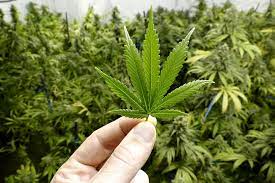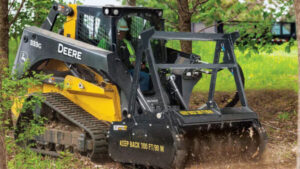11 Tips for Beginners When Growing Marijuana at Home
5 min read
When an epidemic hits, most people turn to quaint pastimes so as to soothe their existential dread, whether it is doing jigsaw puzzles or baking sourdough. If you need to grow your repertoire of distraction methods with a great activity, which has that homey and quiet vibe, consider cultivating cannabis at home.
Whether you prefer outdoor or indoor cultivation, the following tips can help you grow marijuana at home, especially when you are just a beginner:
- Get Seeds
If you stay in a recreational or medical state, you can look for a seed bank, like i49, which sells seeds. Some seed banks can ship your order worldwide but at the buyer’s risk.
When ordering seeds across the world, it would be best to avoid having seeds delivered to the same address where your growing farm is.
- Work with Strict Bedtimes
Many marijuana strains have a short growing cycle of around two months. As such, you should make sure they reach their full potential in just eight months. The best way of achieving this is to have consistent night and day times.
Be sure to maintain this cycle for two months so as to harvest healthy marijuana. If you also have smart lights, you may set them to automatically turn on at night and off during the day.
- Reduce the Amount of Fertilizer
When your cannabis plants reach a certain growth stage, you need to cut back the amount of nutrients you provide. The truth is that marijuana needs minimal nutrients to survive. Excessive nutrients may trigger what is referred to as nutrient burn that starts at the leaves’ tip.
Basically, leaves, which have a nutrient burn, cannot store and create energy for the crop that can lessen your yield. Apart from that, feeding cannabis with excess nutrients will make them have a noticeable chemical, THC content, smell, or taste.
- Prepare a Clean Space
Ensure that your growing space is clean and sanitized all around. Contaminants and pests pose a risk. Messy spaces usually invite harmful bacteria, mold, and pathogens. A perfect way is to plan a bi-weekly cleaning routine and learn to stick to it.
Cannabis plants are bioaccumulators – meaning they suck up everything around them. Ensure the space surrounding the marijuana plants is to keep potential contaminants at bay.
- Use Containers and Media
There are a lot of options when it comes to types of soil, and you may cultivate your marijuana plants outdoors. Quality soil normally looks fluffy, dark, and light texture. The structure of your soil should also be capable of retaining water and allowing excess drainage.
Although organic potting soil blends properly from your local garden center may be just fine, many advanced cultivators prefer blending their organic soil from scratch. Your soil needs to be slightly acidic with a pH of 6. You may test the pH of your soil using a test kit or pH meter.
- Determine the Perfect Time to Grow
You need to be aware of changes in hours of daylight, temperature, and rainfall in many climate zones. If you live in a temperate zone, the change in the daylight hours is substantial between seasons.
Normally, this serves as the cue to the photoperiod-dependent marijuana varieties to perform commerce flowering or vegetative growth. If you prefer trying vegetative growth in the early spring, hours of daylight can be short enough to induce flowering. In this case, it will be wise to wait until it is mid-October or mid-April.
- Know the Costs
The costs of growing cannabis may differ a bit. You have to think about what you want to accomplish before buying your accessories and light fixtures. If you want to operate in a small amount of cash, the running costs of cannabis may be small.
When you choose to grow your marijuana indoors, you will have to get a new tent, grow supplies, and a few oscillating fans. Such a setup may cost a lot of cash on the first run, but it will be much cheaper in the second grow.
- Supply Quality Water
A few municipal water supplies have chemicals like fluoride and chlorine that may impede the growth of your marijuana plants. For good results, make sure the quality of water is pure before adding additives or nutrients.
To achieve this goal, use pH kits so as to test the acidity of water. Some individuals choose to go to grocery stores to get around 6 Gallon jugs that cost on average $5. A reverse osmosis water filter is also a good option. You can buy and install at a good price, offering a continuous supply of pure water.
- Discriminate Depending on Sex
In the case of cultivating cannabis on the pot, sexual discrimination is a great thing. Females produce smokable buds, so it is important to get feminized seeds.
Even male plants in your garden may pollinate the females, causing them to change their energy into making seeds instead of those resinous and sticky buds.
- Provide Enough Lighting
If you need to harvest healthy buds, you have to provide a lot of lighting. When you begin growing with good genetics, whether through regular or feminized seeds, your cannabis plants have the potential for a high level of quality yields.
However, it is almost impossible to get your buds to reach that potential if you use underpowered lights. Powerful grow lights, such as LEDs, HPS, and LECs, may produce the densest and biggest buds.
- Have Limits
State laws differ when it comes to the legal amount of cannabis you may grow. For example, in Colorado and Alaska, you may cultivate up to around five plants for your own use.
In other states, such as Washington, you may grow backyard cannabis for medical use, while in Oregon, personal cultivation is limited to only four cannabis plants at a time.
In Conclusion!
In the end, marijuana cultivation may become challenging and takes a lot of time to master. Because of this, professionals argue that it would be best to start small and keep it simple.
Apart from that, you need to also carry out your research into cannabis plant biology and the state’s cultivation policies.






